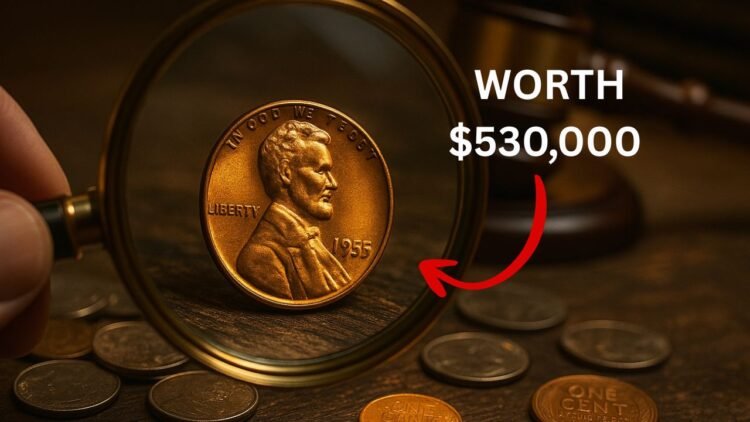The Lincoln Wheat Penny, minted from 1909 to 1958, is one of the most collected coins in U.S. history. While most of these pennies are only worth face value, a handful of rare varieties and errors have sold for jaw-dropping amounts at auction—sometimes as high as $530,000.
Knowing how to identify these life-changing coins can turn a simple piece of change into a small fortune.
The Story Behind the Wheat Penny
The Wheat Penny was first introduced in 1909 to celebrate the 100th anniversary of Abraham Lincoln’s birth. Designed by Victor D. Brenner, it features Lincoln’s portrait on the front and two wheat stalks on the reverse, symbolizing prosperity.
Over nearly five decades of production, multiple varieties, mintmarks, and minting errors were produced. Today, these quirks make some Wheat Pennies highly collectible and extremely valuable.
What Makes a Lincoln Wheat Penny Worth $530,000?
Not all Wheat Pennies are equal. The ones fetching six figures usually have a combination of rarity, error, and condition. Here are the signs to look for:
| Feature | What to Check | Why It Matters | Potential Value |
|---|---|---|---|
| Year & Mintmark | 1909-S VDB, 1914-D, 1922 (no D), 1931-S, 1943 bronze | These are the most famous key dates and varieties. | From $1,000 to $530,000+ |
| Material | Copper (pre-1982) vs. bronze vs. steel | Rare 1943 bronze errors are extremely valuable. | Up to $530,000 |
| Errors | Double dies, off-center strikes, re-punched mintmarks | Unique and often one-of-a-kind. | Hundreds to thousands |
| Condition | Crisp details, no scratches, full luster | Higher grades mean higher demand. | MS65+ can skyrocket in value |
Famous Wheat Penny Varieties Worth Big Money
- 1909-S VDB: Only 484,000 minted with designer initials. Value ranges from $800 to over $50,000.
- 1914-D: Low mintage from Denver. Can bring $3,000+ in good condition.
- 1922 No D: A die error from Denver caused missing mintmarks. Rare examples are worth thousands.
- 1931-S: Another low-mintage coin, often valued at $100–$1,000.
- 1943 Bronze: The holy grail. Most 1943 pennies were struck in steel for the war effort, but a few bronze planchets slipped through. These have sold for as much as $530,000.
How to Spot a Rare Wheat Penny in Your Change
- Check the Date and Mintmark: Flip through pennies and focus on the years listed above.
- Look for Errors: Doubling in the date or lettering, or missing mintmarks, can signal value.
- Weigh the Coin: A 1943 penny in bronze should weigh around 3.11 grams, unlike the 2.7 grams of steel pennies.
- Inspect Condition: Uncirculated coins with sharp details will always sell higher.
- Seek Professional Grading: Submitting your coin to PCGS or NGC can confirm authenticity and boost resale value.
Where to Sell a Valuable Wheat Penny
If you find what looks like a rare penny, here are the best options:
- Auction Houses: Heritage Auctions, Stack’s Bowers—ideal for six-figure coins.
- Online Platforms: eBay attracts a global collector audience.
- Local Coin Dealers: Fast sales but usually lower payouts.
- Coin Shows & Clubs: Great for networking and appraisals.
The Lincoln Wheat Penny proves that everyday change can hide extraordinary value. While most are worth only a cent, rare varieties like the 1943 bronze penny have fetched up to $530,000. By checking the date, mintmark, errors, and condition, you could uncover a coin worth more than a luxury car.
So before you toss your spare pennies into a jar, take a closer look—you might just be holding a life-changing piece of history.
FAQs
Are all Wheat Pennies valuable?
No. Most are common and worth just one cent. Only rare dates, errors, or high grades carry big value.
What is the rarest Wheat Penny?
The 1943 bronze penny is considered the rarest and has sold for over $500,000.
Should I clean my Wheat Penny?
Never. Cleaning reduces the coin’s value. Collectors prefer original condition.

